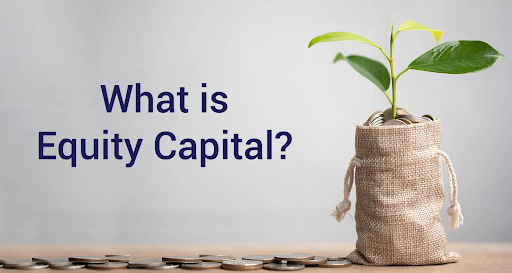When it comes to financial markets and investments, one of the foundational concepts is equity. Whether you are a seasoned trader or a novice engaging in paper trading to simulate real-world strategies, understanding what equity is and how it operates in the financial ecosystem is critical. This article delves deeper into equity as a concept, its importance, and how it is utilized in investment practices.
What is Equity?
In the simplest terms, equity represents ownership. Equity, in the realm of finance, refers to the ownership value of an investment after accounting for any liabilities or debts. It is essentially the difference between the total assets and the total liabilities of an entity.
For example, consider a business. If the total assets of the business are valued at $1,000,000 and its liabilities amount to $400,000, the equity of the business stands at $600,000. In the context of the stock market, what is equity often refers to ownership in a company—most commonly represented by shares of stock. When you purchase shares of a company, you essentially purchase a portion of its equity, giving you ownership rights and, potentially, a share in its future profits.
Another way to perceive equity is as an investor’s “skin in the game.” When you buy equities (stocks), you are investing in the performance of a company. If the company does well operationally, your equity in that investment appreciates, and if the company’s performance suffers, so does the value of your equity.
Types of Equity in Financial Investments
Equity is not a one-size-fits-all term; it takes on various forms depending on its context:
1.Stockholders’ Equity
This refers to the equity held by the shareholders of a company. It is calculated using the company’s total assets minus its total liabilities. Stockholders’ equity is a key metric for understanding a company’s financial health—positive equity indicates that a company has more assets than liabilities, while negative equity may signal financial distress.
2.Home Equity
Outside of the stock market, the concept of equity applies to personal assets, such as property. Home equity refers to the ownership of a property that remains after subtracting the mortgage or liability associated with it.
3.Brand or Intellectual Equity
In addition to financial assets, equity can refer to the intangible value derived from the reputation of a product, service, or brand. For instance, a company like Apple commands significant brand equity, which impacts its stock’s value.
Understanding what equity means in these different contexts is central to leveraging investments more effectively.
The Role of Equity in Investment Portfolios
Particularly in financial markets, equity investments are one of the most popular ways to build wealth over the long term. In contrast to fixed-income securities like bonds, equity investments expose investors to growth potential. However, equities also come with higher risk, as their value can fluctuate based on market conditions.
Investors who focus on equity typically use diversified portfolios that mix stocks across industries and regions to mitigate risk while capitalizing on potential gains. A long-term view of equity investments usually leads to a compounding effect, generating significant returns when the market grows over time.
Why is Equity Central to Financial Decision-Making?
Equity occupies a central place in financial and market investments for several key reasons:
1.Growth Potential:
Investing in equities offers investors the potential for substantial returns. Historically, equity markets, like the S&P 500, have outperformed bonds and other conservative investments over the long term.
2.Ownership and Voting Rights:
Shareholders often receive voting rights in proportion to their holdings, allowing them to influence decisions in the company, from executive appointments to the approval of acquisitions.
3.Access to Dividends:
Many equity investments pay dividends, providing investors with regular income in addition to potential capital gains.
4.Inflation Hedge:
Over time, equities tend to outpace inflation, preserving and increasing the purchasing power of an investor’s wealth.
5.Liquidity:
Unlike tangible assets such as real estate, equities can often be liquidated more quickly, making them a flexible asset class in an investment portfolio.
Learning Equity Using Paper Trading
For individuals new to the world of equity investments, diving directly into financial markets can feel daunting. This is where paper trading plays an invaluable role in learning and preparation. Paper trading refers to the practice of simulating trades and investments in the stock market using virtual portfolios. It allows aspiring investors to build familiarity with market dynamics and equity investments without risking real money.
How Paper Trading Helps New Investors:
– Understanding Equity Markets:
Paper trading enables users to see how equities behave under various market conditions, reinforcing concepts like stock price fluctuations, dividend yields, and market volatility.
– Developing Strategies:
Experimenting with different strategies in paper trading—like value investing, growth investing, or dollar-cost averaging—can help investors identify an approach aligned with their risk tolerance and financial goals.
– Risk-Free Learning:
Since paper trading involves no real capital, users can afford to make mistakes while refining their understanding. This makes it a particularly safe and effective tool for exploring investment options.
Platforms like TradingView, TD Ameritrade’s thinkorswim, and others offer paper trading accounts that mirror real market conditions. It’s an excellent way for investors to practice investing in equities before committing real funds to the markets.
Long-Term Equity Investing: A Key to Financial Growth
Equity should occupy a key position in an investor’s portfolio, as it offers a tangible opportunity for long-term financial growth. By investing in stocks, investors can participate in the success of companies and industries worldwide. It’s important, however, to understand the risks that come with equity exposure, such as market volatility, which can substantially impact the value of investments in short-term scenarios.
To make the most of equity investments, beginner investors can start by allocating a portion of their portfolio to paper trading. This helps them refine their strategies. Once confident, they can gradually increase their real equity exposure while employing diversification strategies to mitigate risk.
Conclusion
Equity remains a cornerstone concept in financial and market investments, representing nothing less than the ownership foundation of businesses and markets. Understanding what equity is, how it functions, and how to use it can empower investors to make informed decisions that generate wealth over time. With tools like paper trading available for practice, even new investors have the chance to understand the complexities of equity trading risk-free. By taking a balanced and informed approach, equity investments can be a powerful vehicle for achieving long-term financial success.










+ There are no comments
Add yours